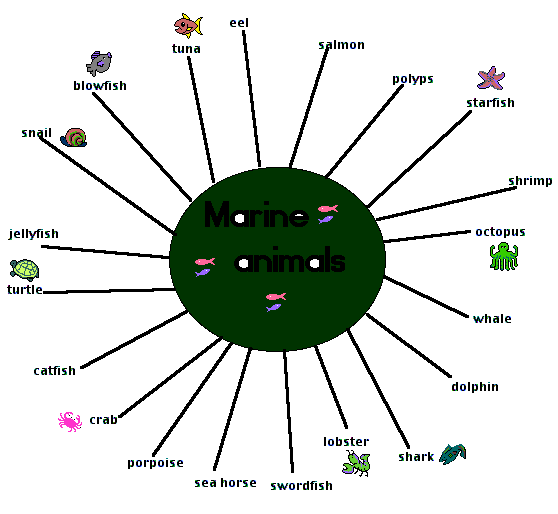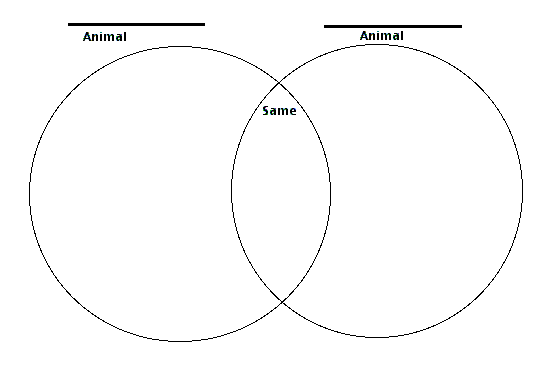 |
LESSON 6
AIM: What are the kinds of marine animal life?
MOTIVATION: Brainstorm with the students the different kinds of animals that live in the ocean. Create a semantic web such as the one below: (web created and imported from KidPix).
 |
1. Introduce vocabulary: crustacean, marine mammal, fish, cartilage, vertebrae, invertebrate
2. Students will watch "Ocean" an Eyewitness video to find out about the three types of marine animals: marine mammals, crustaceans, and fish.
3. The students will then form cooperative learning groups. Each group should have one or more researchers, reporter, recorder, an artist, and a leader. One group will research crustaceans, one group will research fish, and the third group will research marine mammals. They will get their research from the video, the following web sites:
and the datasheet below.
4. Each group will produce a report of information. The reports will then be presented to the class.
5. Each group will then take two of the animal groups and create a Venn Diagram comparing the two groups.
| MARINE ANIMALS | CHARACTERISTICS |
| CRUSTACEANS
|
1. Invertebrates-
no backbone, but an exoskeleton.
2. Covered with a shell. 3. They have segmented bodies. 4. They breathe water 5. They are cold-blooded. 6. They lay eggs. |
| FISH
|
1. Vertebrates-
have a backbone.
2. Covered with scales. 3. They lay eggs. 4. They breathe water through gills. 5. They are cold-blooded. |
| MARINE MAMMALS
|
1. Vertebrates-
have a backbone.
2. Covered with hair. 3. Babies are born alive. 4. They breathe air through lungs. 5. They are warm-blooded. 6. Mothers produce milk from their bodies to feed their young, |
 |
ACTIVITY: The following activity is taken from Ocean, by Janice Van Cleave. It will allow the children to see how a swim bladder allows a fish to move up and down in the water. The activity is presented in Scientific Method.
Problem: How does a swim bladder allow a fish to move up and down in the water?
Hypothesis: We think if a swim bladder is like a balloon of air, then the fish can use it to let air in, and move up, and let air out, and move down.
Materials: quart or liter wide-mouthed jar, water, 2 glass marbles, two 7-inch round balloons.
Procedure: 1. Fill the jar 3/4 full with water. 2. Place 1 marble inside each balloon. 3. in one of the balloons, tie a knot as close to the marble as possible. 4. Drop the balloon in the water. 5. Slightly inflate the 2nd balloon with air, and tie a knot as close to the mouth of the balloon as possible. 6. Drop this balloon in the jar of water.
Observations or Results: The inflated balloon floats on the surface of the water, but the deflated balloon sinks to the bottom of the jar.
Conclusion: Because the balloon with the air takes up more space for its weight, it is able to float. Objects with more air in them can float. Fish use this air bladder to move up and down in the water.
FOLLOW-UP: This lesson will lead into the next lesson: "What is a coral reef?"